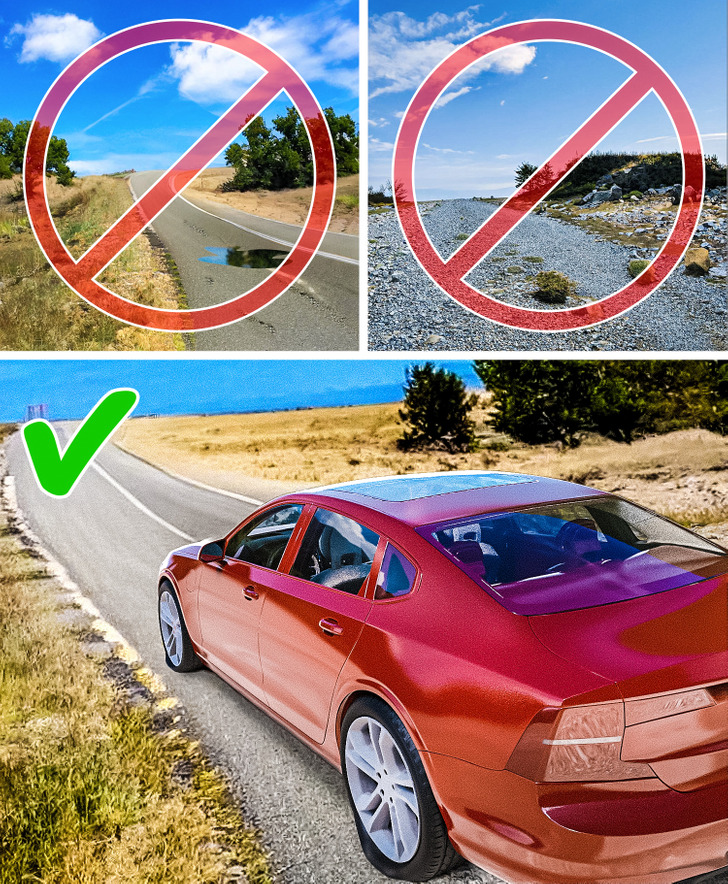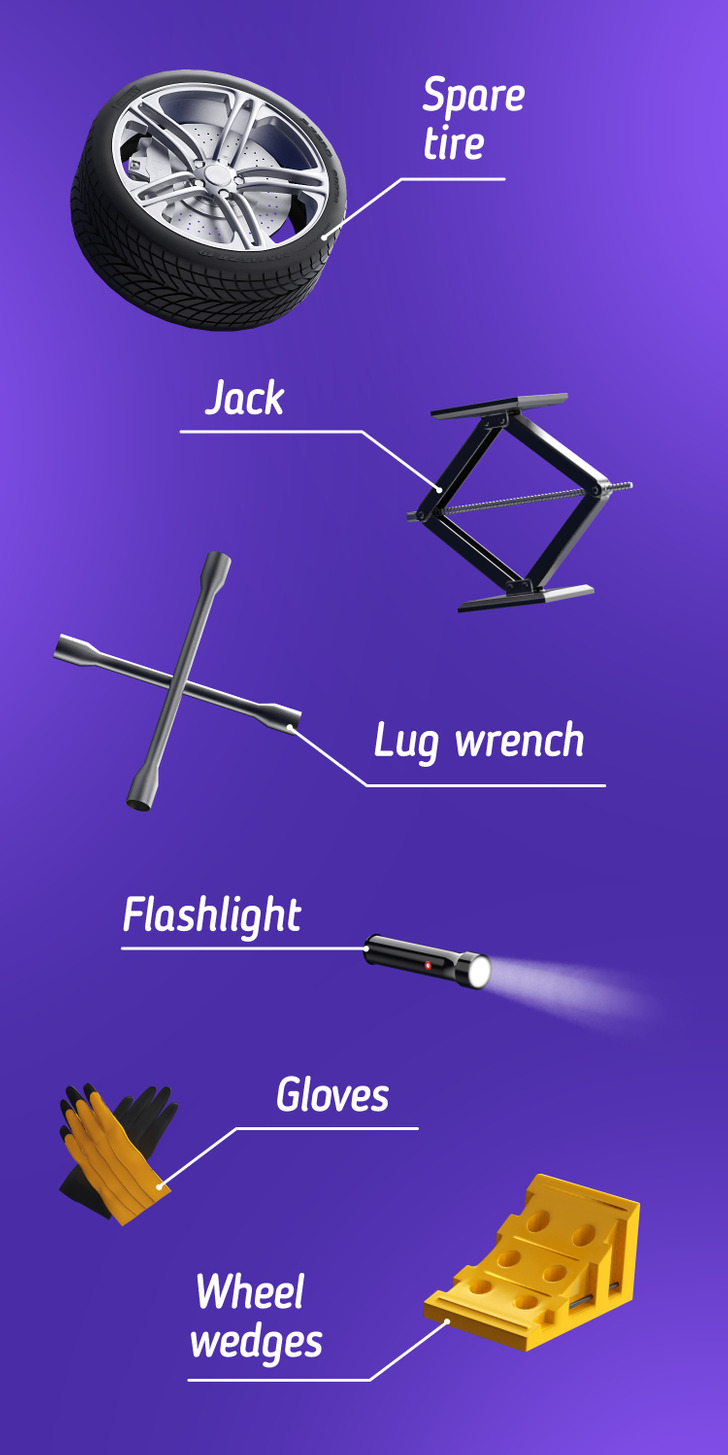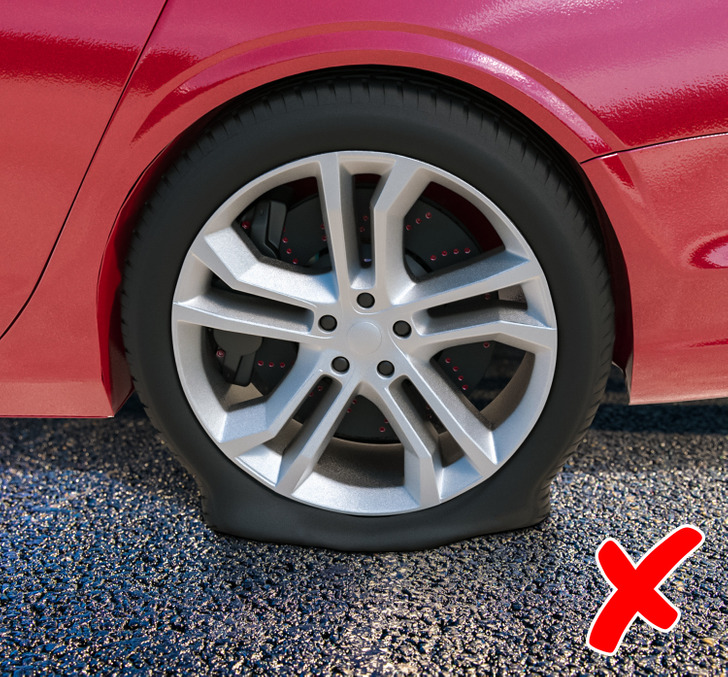What to Do If You Have a Flat Tire
Many of us don’t know what to do if we have a flat tire, and we don’t even think about it until we end up on the side of the road.
To know how to cope with this problem, 5-Minute Crafts prepared this article. And in the bonus section, you’ll find out what to do if you don’t have a spare tire.
How to avoid this situation

- Check tire pressure monthly, including the spare tire.
- Slow down before driving over any obstacle on the road.
- Don’t run over curbs and try not to rub them when parking.
- Inspect tires regularly for uneven wear patterns on the tread, cracks, and foreign objects. Make sure your tire valves have caps.
- Be careful when carrying heavy loads, as overloading and low tire pressure can cause the tire to overheat, which can cause tire failure.
- Make sure you have a spare tire and the necessary tools to change the tire. You will need a wrench, a jack, wheel wedges, gloves, and a flashlight. And just in case, buy a sealant.
- Change tires every 6 months.
- If your car vibrates while driving or you hear a hissing sound from the tires, contact your tire shop immediately.
- When driving, always scan the road ahead for problems. Potholes and large road debris can damage your tires.
What to do if your tire still gets damaged

Signs of a flat tire:
- It’s difficult for you to accelerate.
- You have a dragging feeling on the affected side of the car.
- You hear a popping or leaking sound.
- You can’t handle your car properly when changing lanes, turning, or performing other maneuvers.
If you have a flat tire, turn on your emergency lights and slow down. Pull over as soon as you see an open stretch of road away from traffic. Driving with a flat tire can cause serious damage to your vehicle and can also be dangerous for you and other drivers. Check if you have a spare tire, lug wrench, jack, wheel wedges, gloves, and a flashlight. If you have all of them, try changing the tire yourself.
- Place the wheel wedges behind the rear wheels if you are changing a front tire, and before the front wheels if you are changing a rear tire to prevent the vehicle from rolling.
- Remove the hubcap and loosen the lug nuts on the flat tire by turning them counterclockwise with the lug wrench.
- Use the jack to lift the flat tire about 6 inches off the ground.
- Remove the lug nuts.
- Pull the wheel toward yourself to remove it.
- Place the spare tire, aligning the wheel rim with the bolts.
- Place the lug nuts and turn them clockwise. Check if they are well tightened.
- Lower the vehicle until the tire is back on the ground. But keep in mind that it will not yet withstand the full weight of the car.
- Tighten the nuts with the lug wrench.
- Lower the vehicle completely and remove the jack.
If you are unable to change the tire yourself, call an emergency roadside assistance company.
How far you can drive on a flat tire

Driving on a flat tire is a sure way to put passengers at risk and seriously damage your vehicle. This not only impairs the handling of your car, but can also cause structural damage to the wheel, brakes, suspension, and steering system. It may be tempting to “limp” your car to the nearest repair shop, but you may end up paying far more for repairs than just changing a flat tire.
Bonus: what to do if you have a flat tire but no spare tire
- Inspect the tire to find visible punctures or foreign objects. If you don’t find anything, put your ear to the tire and listen for a faint leaking sound. Sometimes an invisible puncture can be found by holding your hand directly over the tire to feel an air leak.
- If this didn’t help, fill a bucket with water and add dish soap. Apply the mixture to the outside of the tire until it foams up. Wait until the air from the puncture creates a small patch of foamy bubbles. Mark the spot and rinse off the soapy water.
- Use a sealant to repair the puncture. Don’t forget that this is a temporary measure that will help you get to the repair shop. Be sure to read the product-specific instructions on the packaging before using a puncture sealant.